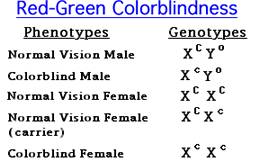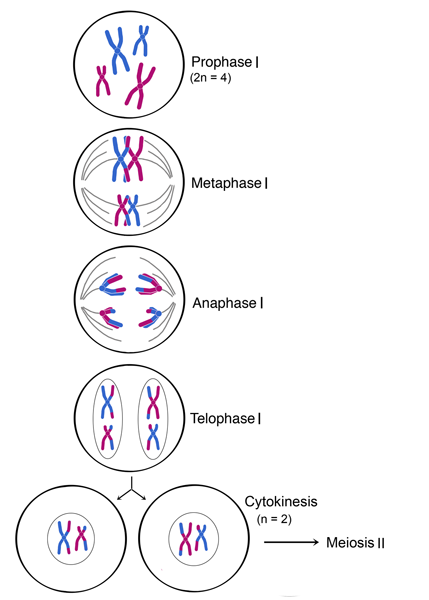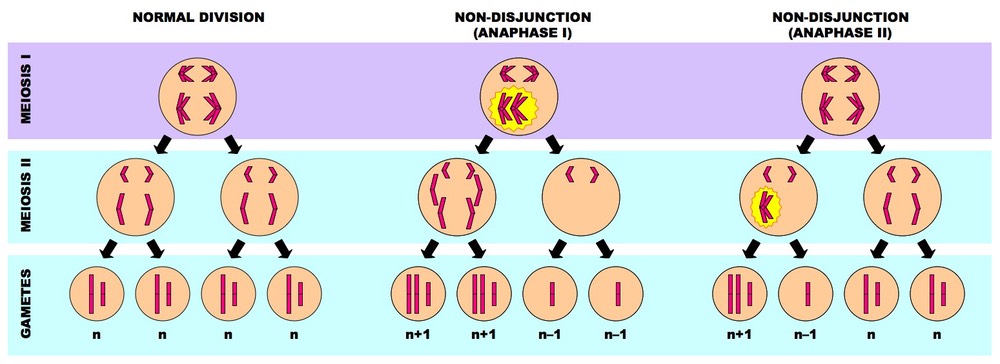PCR is a way of producing large quantities of a specific target sequences of DNA
It is useful when only a small amount of DNA is available for testing
PCR occurs in a thermal cycler and involves a repeat procedure of 3 steps:
- Denaturation: DNA sample is heated to separate it into two strands
- Annealing: DNA primers attached to opposite ends of the target sequences
- Elongation: A heat-tolerant DNA polymerase (Taq) copies the strand
One cycle of PCR yields two identical copies the DNA sequences
4.4.2 State that, in gel electrophoresis, fragments of DNA move in an electric field and are separated according to their size.
Gel electrophoresis is a technique which is used to separate fragments of DNA according in size
- Samples of fragmented DNA are placed in the wells of an agarose gel
- The gel is placed in a buffering solution and an electrical current is passed across the gel
- DNA, being negatively charged (due to phosphate), moves to the positive terminus (anode)
- Smaller fragments are less impeded by the gel matrix and move faster through the gel
- The fragments are thus separated according to size
- Size can be calculated (in kilobases) by comparing against a known industry standard
4.4.3 State that get electrophoresis of DNA is used in DNA profiling.
DNA profiling is a technique by which individuals are identified on the basis of their respective DNA profiles
Within the non-coding region of an individual's genome, there exists satellite DNA - long stretches of DNA made up of repeating elements called short tandem repeats (STRs)
These repeating sequences can be existed to form fragments, by cutting with a variety of restriction endonucleases (which cut DNA at specific sites)
As individuals all have a different number of repeats in a given sequence of satellite DNA, they will all generate unique fragment profiles
These different profiles can be compared using gel electrophoresis
4.4.4 Describe the application of DNA profiling to determine paternity and also in forensic investigations.
A DNA sample is collected (blood, saliva, semen, etc) and amplied using PCR
Satellite DNA (non-coding) is cut with specific restriction enzymes to generate fragments
Individuals will have unique fragment lengths due to the variable length of their short tandem repeats (STR)
The fragments are separated with gel electrophoresis (smaller fragments move quickers through the gel)
The DNA profile can then be analysed according to need
Two applications of DNA profiling are:
- Paternity testing (comparing DNA of offspring against potential fathers)
- Forensic investigation (identifying suspects or victims based on crime-scene DNA)
4.4.5 Analyse DNA profiles to draw conclusions about paternity or forensic investigations
Paternity testing: Children inherit half of their alleles from each parent and thus should possess a combination of their parents alleles
Forensic investigation: Suspect DNA should be a complete match with the sample taken from a crime scene if a conviction is to occur
4.4.6 Outline three outcomes of the sequencing of the complete human genome
The human genome project (HGP) was an international cooperative venture established to sequence the 3 billion base pair (~25,000 genes) in the human genome
The outcomes of this project include:
- Mapping: We now know the number, location and basic sequence of human genes
- Screening: This has allowed for the production of specific gene probes to detect sufferers and carriers of genetic disease conditions
- Medicine: With the discovery of new proteins and their functions, we can develop improved treatments (pharmacogenetics and rational drug design)
- Ancestry: It will give us improved insight into the origins, evolution and historical migratory patterns of humans
With the completion of the Human Genome Project in 2003, researcher have begun to sequence the genomes of several non-human organisms
4.4.7 State that, when genes are transferred between species, the amino acid sequence of polypeptides translated from them is unchanged because the genetic code is universal.
The genetic code is universal, meaning that for every living organism the same codons code for the same amino acids (there are few rare exceptions)
This means that the genetic information from one organism could be translated by another (i.e. it is theoretically transferable)
4.4.8 Outline a basic technique used for gene transfer involving plasmids, a host cell (bacterium, yeast or other cell), restriction enzymes (endonucleases) and DNA ligase
1. DNA Extraction
- A plasmid is removed from a bacterial cell (plasmids are small, circular DNA molecules that can exist and replicate autonomously)
- A gene of interest is removed from an organism's genome using a restriction endonuclease which cut at specific sequences of DNA
- The gene of interest and plasmid are both amplified using PCR technology
2. Digestion and Ligation
- The plasmid is cut with the same restriction enzyme that was used to excise the gene of interest
- Cutting with certain restriction enzymes may generate short sequences overhangs ("sticky ends") that allow the two DNA constructs to fit together
- The gene of interest and plasmid are spliced together by DNA ligase creating a recombinant plasmid
3. Transfection and Expression
- The recombinant plasmid is inserted into the desired host cells (this is called transfection for eukaryotic cells and transformation for prokaryotic cells)
- The transgenic cell will hopefully produce the desired trait encoded by the gene of interest (expression)
- The product may need to subsequently be isolated from the host and purified in order to generate sufficient yield
4.4.9 State two examples of the current uses of genetically modified crops or animals
Crops
- Engineering crops to extend shelf life of fresh produce
- Tomatoes (Flavr Savr) have been engineered to have an extended keeping quality by switching off the gene for ripening and thus delaying the natural process of softening the fruit
- Engineering of crops to provide protection from insects
- Maize crops (Bt corn) have been engineered to be toxic to the corn borer by introducing a toxin gene from a bacterium
Animals
- Engineering animals to enhance production
- Sheep produce more wool when engineered with the gene for the enzyme responsible for the production of cystesine - the main amino acid in the keratin protein of wool
- Engineering animals to produce desired products
- Sheep engineered to produce human alpha-1-antitrypsin in their milk can be used to help treat individuals suffering from hereditary emphysema
4.4.10 Discuss the potential benefits and possible harmful effects of one example of genetic modification
Potential benefits
- Allows for the introduction of a characteristic that wasn't present within the gene pool (selective breeding could not have produced desired phenotype)
- Results in increased productivity of food production (require less land for comparable yield)
- Less use of chemical pesticides, reducing the economic cost of farming
- Can now grow in regions that, previously, may not have been viable (reduces need for deforestation)
Potential harmful effects
- Could have currently unknown harmful effects (e.g. toxin may cause allergic reactions in a percentage of the population)
- Accidental release of transgenic organism into the environment may result in competition with native plant species
- Possibility of cross pollination (if gene crosses the species barrier and is introduced to weeds, may have a hard time controlling weed growth)
- Reduces genetic variation / biodiversity (corn borer may play a crucial role in local ecosystem
4.4.11 Define clone
A clone is a group of genetically identical organisms or a group cells derived from a single parent cells
4.4.12 Outline a technique for cloning using differentiated animal cells
Somatic cell nucleus transfer (SCNT) is a method of reproductive cloning using differentiated animal cells
- A female animal (e.g. sheep) is treated with hormones (such as FSH) to stimulate the development of eggs
- The nucleus from an egg cell is removed (enucleated), thereby removing the genetic information form the cell
- The egg cell is fused with the nucleus from a somatic (body) cell of another sheep, making the egg cell diploid
- An electric shock is delivered to stimulate the egg to divide, and once this process has begun the egg is implanted into the uterus of a surrogate
- The developing embryo will have the same genetic material as the sheep that contributed the diploid nucleus, and thus be a clone
4.4.13 Discuss the ethical issues of therapeutic cloning in humans.
Arguments for therapuetic cloning
- May be used to cure serious diseases or disabilities with cell therapy (replacing bad cells with good ones)
- Stem cells research may pave way for future discoveries and beneficial technologies that would not have occurred if their use had been banned
- Stem cells can be taken from embryos that have stopped developing and would have died anyways (e.g. abortions)
- Cells are taken at a stage when the embryo has no nervous system and can arguably feel no pain
Arguments against therapeutic cloning
- Involves the creation and destruction of human embryos (at what point do we afford the right to life?)
- Embryonic stem cells are capable of continued division and may develop into cancerous cells and cause tumors
- More embryos are generally produced than are needed, so excess embryos are killed
- With additional cost and effort, alternative technologies may fulfill similar roles (e.g. nuclear reprogramming of differentiated cell lines)






























































